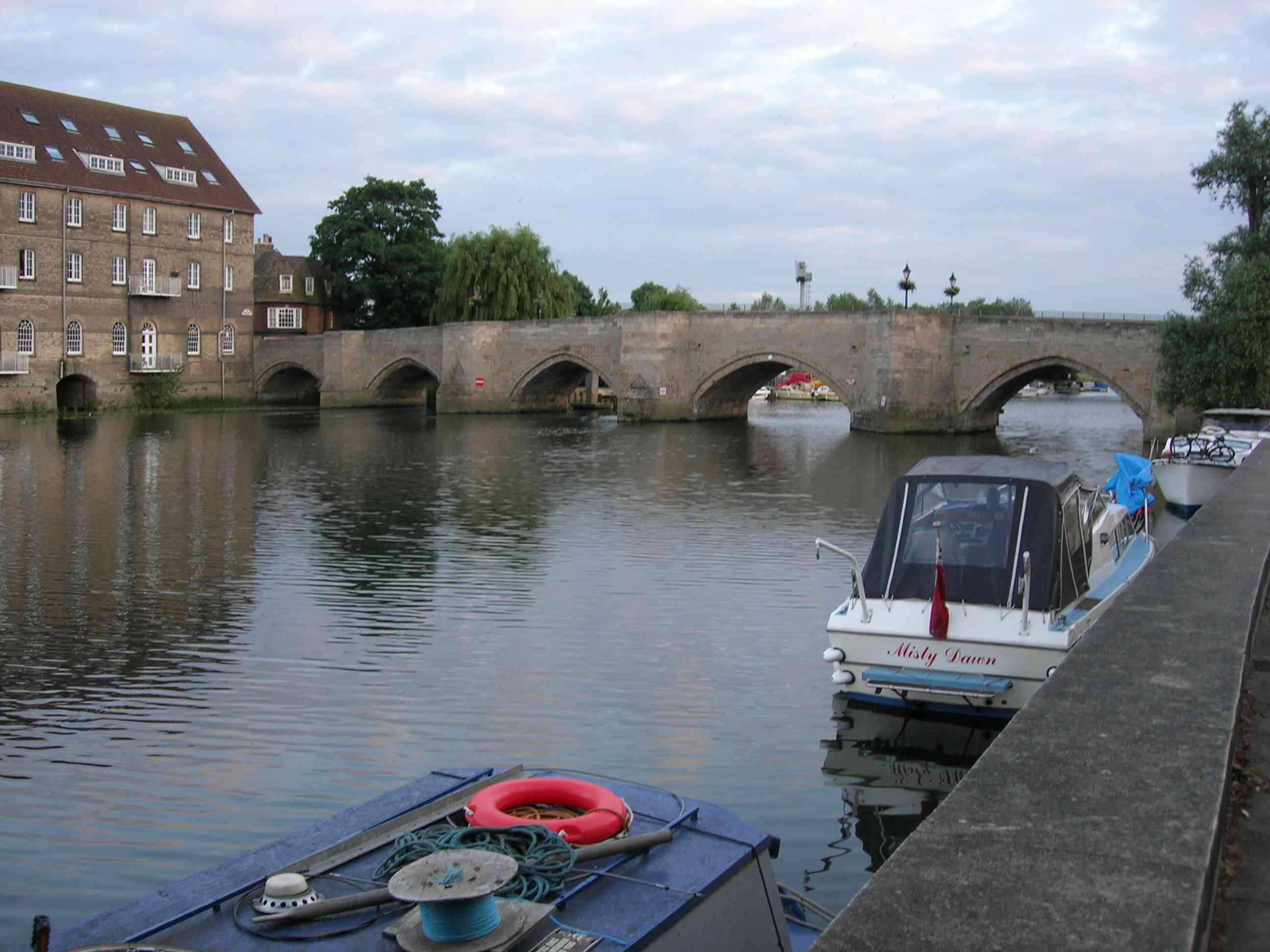Old Bridge, Huntingdon on:
[Wikipedia]
[Google]
[Amazon]
 The Old Bridge in Huntingdon (now part of Cambridgeshire, England) is a well-preserved medieval stone bridge over the
The Old Bridge in Huntingdon (now part of Cambridgeshire, England) is a well-preserved medieval stone bridge over the
Cambridgeshire County Council: Bridge maintenance policy
, accessed 2009-10-31
Town conservation, including a brief history
{{coord, 52.3274, N, 0.1777, W, source:wikidata, display=title Bridges across the River Great Ouse Bridges in Cambridgeshire Deck arch bridges Bridges completed in the 10th century Buildings and structures completed in 1332 Grade I listed bridges Huntingdon Bridge Scheduled monuments in Cambridgeshire Stone bridges in the United Kingdom Huntingdon Buildings and structures in Huntingdonshire Bridges completed in the 14th century Former toll bridges in England
 The Old Bridge in Huntingdon (now part of Cambridgeshire, England) is a well-preserved medieval stone bridge over the
The Old Bridge in Huntingdon (now part of Cambridgeshire, England) is a well-preserved medieval stone bridge over the River Great Ouse
The River Great Ouse () is a river in England, the longest of several British rivers called "Ouse". From Syresham in Northamptonshire, the Great Ouse flows through Buckinghamshire, Bedfordshire, Cambridgeshire and Norfolk to drain into the Wa ...
, connecting Huntingdon to Godmanchester.
History
The town has long been an important bridgehead, with Ermine Street (connecting London to Lincoln and York), as well as various east–west trade routes, crossing the Great Ouse here. Ermine Street would have first crossed the river here via a ford, believed to be some way to the west of the present bridge. Edward the Elder built a wooden bridge in the early 10th century a few yards to the west of the current bridge, and also ordered the nearby Huntingdon Castle to be rebuilt. Until the 1107 construction of the first bridge in St Ives, it is believed that there was no bridge further downstream, and foreign trade would navigate the river as far upstream as Huntingdon. Responsibility for the bridge's repair was for centuries a matter of dispute. In 1259 a court ruling finally ordered that the county should pay to keep it repaired in return for rendering the bridge toll-free. Nonetheless, the bridge remained in a poorly maintained state, and by 1329 was declared to be in severe danger of collapse. The current bridge was constructed around 1332, with work starting on both banks or the river. The slight kink near the central pier was a result of the lack of alignment of the two halves. Consisting of six arches and faced with ashlar, the parapets which form recesses for pedestrians, are triangular in shape on the north side, and semi-hexagonal on the south. It was intended for bothpedestrian
A pedestrian is a person traveling on foot, whether walking or running. In modern times, the term usually refers to someone walking on a road or pavement, but this was not the case historically.
The meaning of pedestrian is displayed with ...
and horse-drawn transport (the bridge has recesses for people to stand to let the heavier traffic pass), but now serves exclusively for light vehicular traffic. Pedestrians use a parallel footbridge just metres upstream. Local heavy vehicles must use the A1307 with other traffic using the A14 viaduct via Brampton Hut interchange, or the A141.
The bridge is now Grade I listed
In the United Kingdom, a listed building or listed structure is one that has been placed on one of the four statutory lists maintained by Historic England in England, Historic Environment Scotland in Scotland, in Wales, and the Northern Irel ...
and a Scheduled Ancient Monument., accessed 2009-10-31
References
External links
Town conservation, including a brief history
{{coord, 52.3274, N, 0.1777, W, source:wikidata, display=title Bridges across the River Great Ouse Bridges in Cambridgeshire Deck arch bridges Bridges completed in the 10th century Buildings and structures completed in 1332 Grade I listed bridges Huntingdon Bridge Scheduled monuments in Cambridgeshire Stone bridges in the United Kingdom Huntingdon Buildings and structures in Huntingdonshire Bridges completed in the 14th century Former toll bridges in England